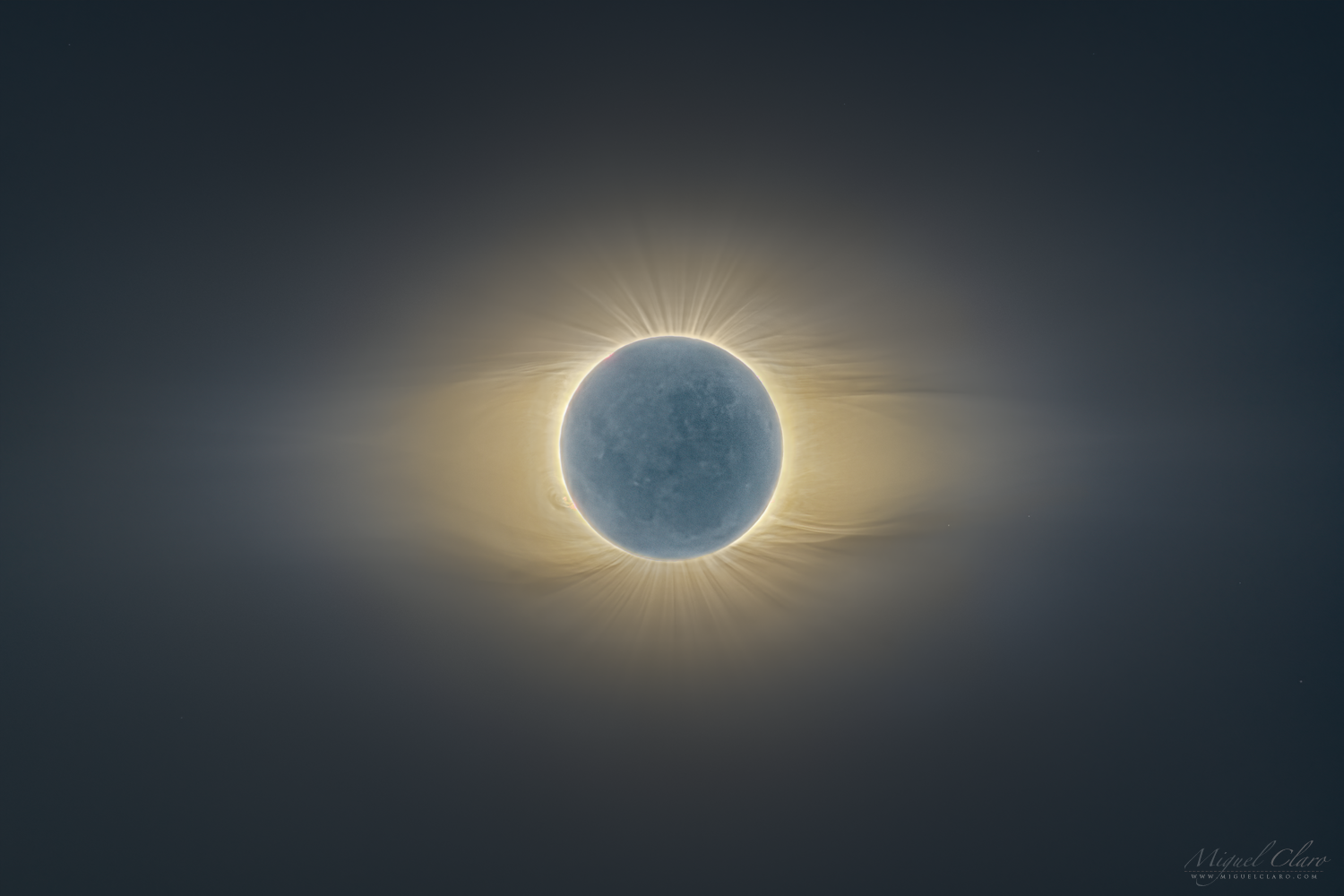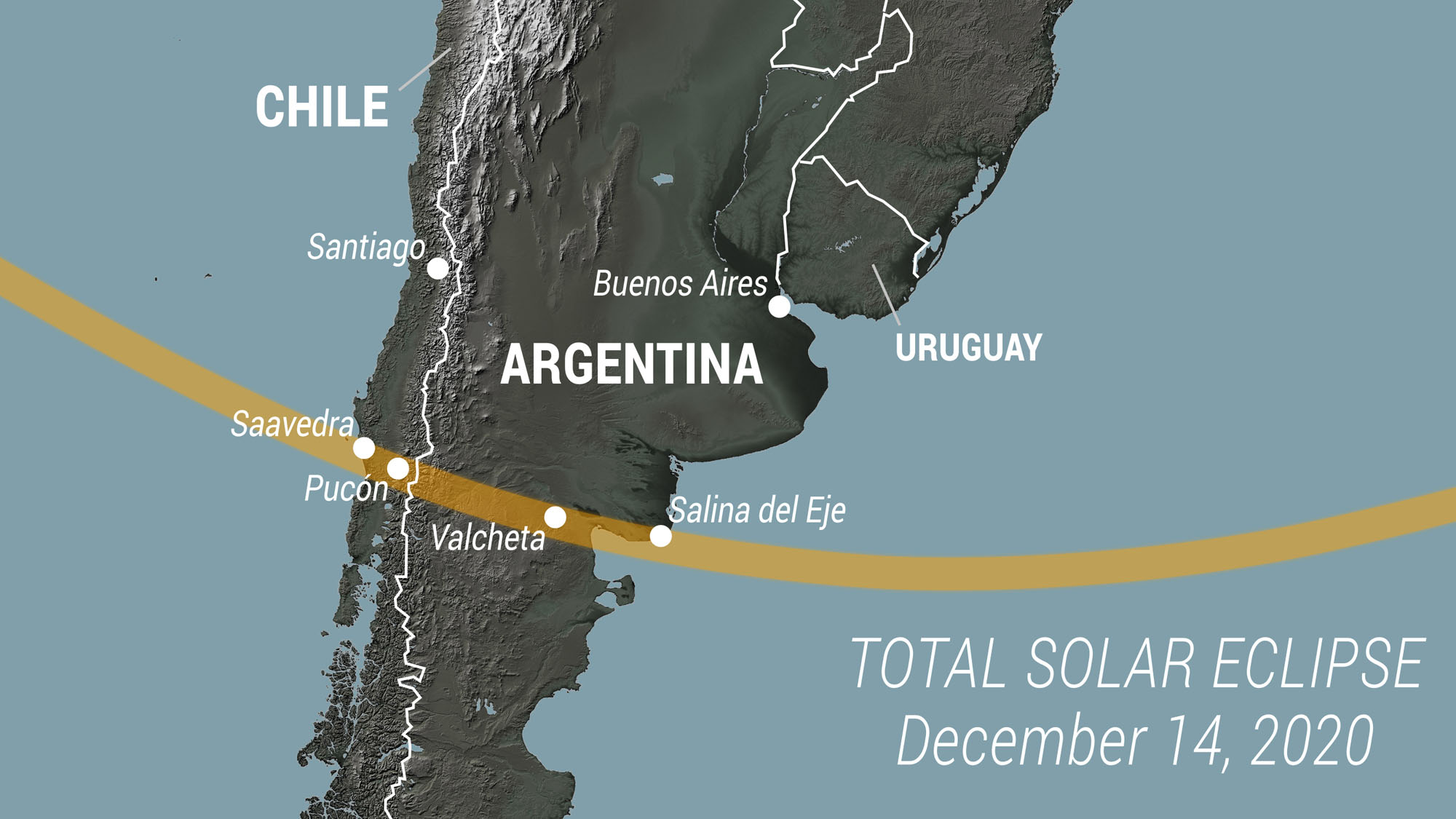The coronavirus pandemic will leave some eclipse chasers in the dark for the total solar eclipse of 2020
One eclipse chaser met his wife on a trip to view a total solar eclipse 25 years ago.

Update for Dec. 14: The only total solar eclipse of 2020 wowed skywatchers in South America despite overcast skies. Read our full story and see the photos here!
Eclipse chasers are so enthusiastic about solar eclipses that they rarely miss these celestial events, even if they have to travel across the world to view them. But the coronavirus outbreak has halted their plans for the one and only total solar eclipse of the year.
On Monday (Dec. 14), the total solar eclipse of 2020 will sweep across South America's Southern Cone, through Chile and Argentina, turning daytime into twilight for up to 2 minutes and 10 seconds as the moon passes in front of the sun. A partial eclipse will be visible throughout the continent, as well as parts of southwestern Africa.
But even as some countries around the world have begun to ease certain travel restrictions that were created to mitigate the spread of the COVID-19 pandemic, nations like Chile have created new lockdowns as they experience a new surge of cases. Meanwhile, Argentina is beginning to ease its travel restrictions, but its borders are still closed to tourists from non-neighboring countries.
Video: Total Solar Eclipse in December 2020 - Where is it visible?
Related: Total solar eclipse 2020: Here's how to watch it online
"I've been to every continent to see solar eclipses, even Antarctica," Fred Espenak, retired NASA astrophysicist and eclipse chaser told Space.com in an interview. Espenak, aka "Mr. Eclipse," ran eclipse prediction models during his time at NASA, and he currently manages the websites EclipseWise.com and MrEclipse.com. He said he's traveled to see more than 40 solar eclipses, including total, partial and annular eclipses.
"I have made a lot of friends from eclipses, and I met my wife on an eclipse trip," he said. They met on a solar-eclipse tour in northern India in 1995. Since then they've traveled together to see many eclipses, and were going together to Chile on a guided trip for the Dec. 14 event. He backed out of the trip in October when it was clear to him that a COVID-19 vaccine wouldn't be readily available by December. The trip was officially cancelled this week when Chile announced new pandemic restrictions amidst a recent spike in cases.
Breaking space news, the latest updates on rocket launches, skywatching events and more!
Instead of travelling, Espenak will join a video call with other eclipse chasers as a community event to watch the eclipse together and listen to each other's comments, he said.
Video: Dramatic drone video captures magic of total solar eclipse
Eclipses hold a certain sway for many people.
One reason that people follow eclipses is because each event is unique, in time duration, location and in appearance. "From one eclipse to another, the corona is dramatically different," Espenak said. The corona, or the sun's wispy (and scorching hot) halo, is the only part of the sun that is visible during an eclipse.
One astronomer compared total solar eclipses to the Mona Lisa painting.
"One of the analogies that I use are, if you are a lover of Leonardo di Vinci, and you really loved gazing at the Mona Lisa in the Louvre, how would you feel if you only had a chance to look at the Mona Lisa for two minutes every two years?" Glenn Schneider, an astronomer at the University of Arizona, told Space.com. "And some years, when you travel to Paris to see it, it might be cloudy that day and you can't see the Mona Lisa."
Schneider, who said he's seen 35 total solar eclipses, said that he has taken the opportunity to study eclipses for scientific reasons but that he doesn't chase them for professional reasons. "I chase them because they are just the most aesthetically wonderful thing you can experience."
Schneider was precluded from travel because of personal COVID-19 risks.
Related: Total solar eclipse of 2020 prompts launch delay for Rocket Lab
Jay Pasachoff, an astronomer at Williams College in Massachusetts, is another eclipse chaser who couldn't travel for the Dec. 14 solar eclipse. At the age of 77, it was not advisable that he go to airports, he told Space.com in an email. Pasachoff will be "staying safe to see next year's total eclipse and those that follow," he added.
This is only the second total eclipse since 1970 that Pasachoff has missed, and he has viewed about 35 of them, he said. Pasachoff had planned to travel to Chile with several other researchers and filmmakers, and some were able to travel to Chile, he wrote.
Those who are in Chile will be taking imagery of the eclipse, and Pasachoff plans to use the footage to observe Baily's Beads. One experiment he had planned for this eclipse, the coronal-oscillation experiment and its six suitcases of equipment, had to be left behind in Massachusetts "because neither my MIT colleague nor I am allowed to go [to Chile] for COVID reasons," he wrote.
Some of the work that Pasachoff and others are able to perform in Chile will be facilitated by a local astronomer named Thomas Puzia, professor at the Institute for Astrophysics of the Pontifical Catholic University of Chile.
The International Astronomical Union has created a list of solar eclipse events and live streams for the public. You can also watch the eclipse live here on Space.com.
Follow Doris Elin Urrutia on Twitter @salazar_elin. Follow us on Twitter @Spacedotcom and on Facebook.

Doris is a science journalist and Space.com contributor. She received a B.A. in Sociology and Communications at Fordham University in New York City. Her first work was published in collaboration with London Mining Network, where her love of science writing was born. Her passion for astronomy started as a kid when she helped her sister build a model solar system in the Bronx. She got her first shot at astronomy writing as a Space.com editorial intern and continues to write about all things cosmic for the website. Doris has also written about microscopic plant life for Scientific American’s website and about whale calls for their print magazine. She has also written about ancient humans for Inverse, with stories ranging from how to recreate Pompeii’s cuisine to how to map the Polynesian expansion through genomics. She currently shares her home with two rabbits. Follow her on twitter at @salazar_elin.


